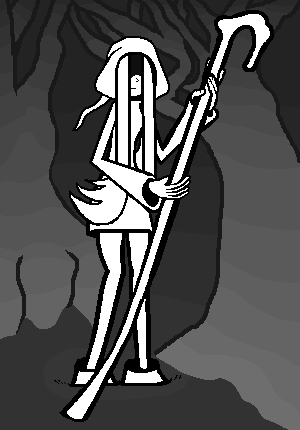The Rule of Five_________ __ __ _ _
With regards to days, weeks, months, and seasons, the rule of five generally prevails, with most being multiples of this sacred number. Below, you will find a guide to each of these units of time.
Days and Weeks_________ __ __ _ _
There are five days of the week, and so seventy-three weeks in a year. In different languages, they are known as:
Avincian: Taldes, Pandes, Orredes, Lepdes, Victendes
Parrench: Teldi, Pennedi, Hordi, Lipdi, Bianche
Drudgunzean: Telltag, Fritag, Hegnstag, Lentag, Vintag
Loh Eskandish: Dallday, Freckday, Higgensday, Stillday, Shonday (this is the northern dialect)
Ath Eskandish: Delday, Frickday, Hegensday, Stalday, Thonday (this is the southern dialect)
Revidian: Taldi, Pandi, Orredi, Lepdi, Viddendi (Revidian is spoken to the northwest of Parrence)
Belzaggic: Tolduch, Parduch, Gorduch, Lebduch, Zarduch (Belzaggic is spoken in Eastern Severa)
Inipori: Hāttah, Sarbah, Uhibah, Khabah, Iirbah (Inipori is spoken in Western Severa)
Seasons, Months, and Festivals______ __ __ _ _
A year on Sipenta is 365 days long and is divided into five seasons and ten months (two for each season). These months are thirty-six or thirty-seven days long. In different languages, their names are:
Avincian: Tiptos, Tellos, Vardes, Assani, Velles, Mittria, Ardanes, Jores, Carles, and Zales
Parrench: Tippe, Tellose, Verdi, Assende, Velle, Metrie, Arres, Jorre, Cheaux, and Seaux
Drudggnzean: Tippe, Telse, Varte, Aste, Valke, Mitte, Harte, Jurre, Kalle, Zaxe
Loh Eskandish: Tiktas, Telkas, Vardith, Asted, Velka, Mittrech, Hedreth, Jarred, Kell, and Zeax
Ath Eskandish: Tiptas, Telas, Varrdi, Astad, Velath, Mittrich, Hadreth, Jorred, Kol, and Zeax
Revidian: Tippio, Tello, Varri, Assani, Vellia, Mirrari, Errara, Giorte, Calla, and Zallo
Belzaggic: Belgo, Tellaz, Vorrag, Azan, Vela, Mota, Homuch, Yogu, Chell, and Zagg
Inipori: Hasirang, Arfatt, Zehelli, Jahass, Ohimuk, Akbin, Tahara, Elirang, Angkari, Zaha
Associated God: Ipte (the lover)
Months: Tippe and Tellose
Connection to God: time spent with those you love, importance of love and warmth, many children conceived
Equivalent Months: January - first half of March (January 1 - March 14)
Holiday: takes place in the first week of the year and is a continuation of Somnes’ holiday. It begins with a mass catharsis and celebration on the first day, and tails off over the week, representing the course of love and beauty and how it both lasts and fades. Beautiful decorations and feasting. Ample leftovers to be eaten as the feast continues.
Associated God: Chune (the learner)
Months: Verdi and Assende
Connection to God: represents growth and new discovery
Equivalent Months: second half of March - May (March 15 - May 26)
Holiday: takes place in midseason. The day of skills (week of skills for some nobility) in which people hold competitions, concerts, talent shows, and dances. This is a time of pride in one’s accomplishments and skills, particularly in the case of children. This holiday plays very differently depending on class and culture.
Associated God: Oraphe (the creator)
Months: Velle and Metrie
Connection to God: height of flourishing, when the world is most alive
Equivalent Months: end of May - early August (May 27 - August 7)
Holiday: There are two during this season: a Mother’s Day at the start, celebrating the giving of life, and a Father’s Day at the end, celebrating the protection and preservation of life.
Associated God: Echeran (the destroyer)
Months: Arres and Jorre
Connection to God: Harvest is the reaping. Summer ends and leaves fall
Equivalent Months: Second half of August - first half of October (August 8 - October 19)
Holiday: Two of them - day of the dead at the start of the season and a harvest festival at the end. Day of the dead varies depending on what sort of year it was and is informally tied to the preserver’s day immediately beforehand. There is a rising trend among the merchant class of holding masquerade balls.
Associated God: Dami (the judge)
Months: Cheaux and Seaux
Connection to God: review of the year, final season is the final say or impression; a sober, somber time
Equivalent Months: second half of October - December (October 20 - December 31)
Holiday: Comes on the last five days of the year. Each day is a year-in-review reflection of how well you served each of the gods, in order, ending with the judge. On that day, you solemnly set your resolutions for the coming year and choose an item to add to your memory box. Every fifth year of your life, you open the box and take an item out each of the five days, reflecting on that instead of the gods. In some cultures, resolutions are between you and Dami, in others, they are discussed and shared around the dinner table, in others, you receive them from people in your life whose roles correspond in some way to each of the gods’. In a few, you only share your resolutions with a single ‘guarantor’, whose job it is to help you stay true to your goals. Your guarantor is usually someone who is senior to you or a responsible peer.
Years_________ __ __ _ _
Years on Sipente work in a rolling system where five years at a time are dedicated to a particular aspect (or both aspects or neither) and also a particular god of the Pentad before both change. There are four aspect types (aun, sept, aun-sept, and none) while there are five gods, so any exact combination only repeats after exactly one century. Essentially, there are three components to a year: the aspect name, the deity name, and a number. For example, the very first year after the deposition of the last Avincian Emperor (which marks the start of the current calendar) was Ahn-Ipte 1. The second was Ahn-Ipte 2, then 3, 4, and 5. After those five years passed, the next aspect was Zept and the next god was Shune, so it was Shune-Zept 1, then Shune-Zept 2, and so on. For a better illustration, please take a look
here.
When a five-year cycle honours both aspects of a god, as happens once each century for each god, that god is considered to be in ascendance, as Chune was when Holmenbahn split in two, with the western half joining Drudgunze in the year ACS11. Thirteen years have passed so, for reference, the current year is Aun-Echeran 14 (or AE14, for short).

































